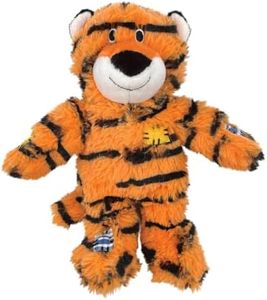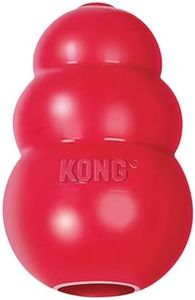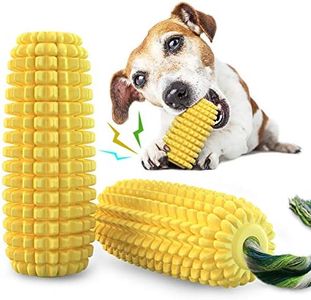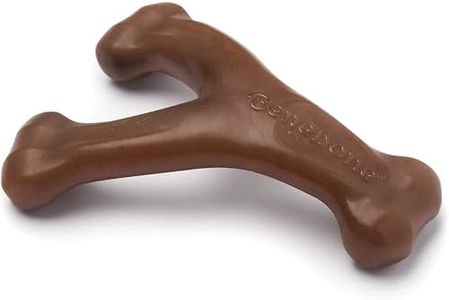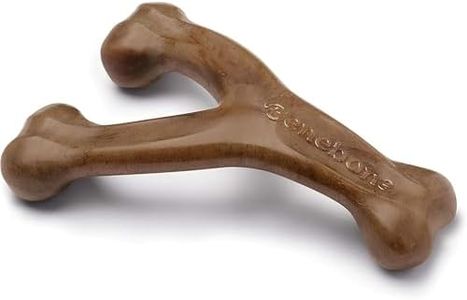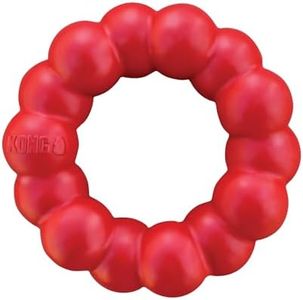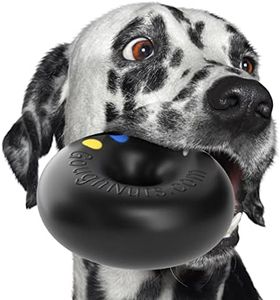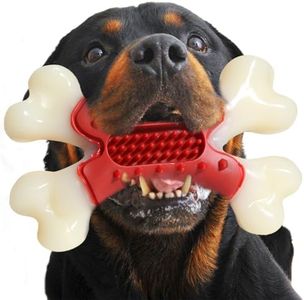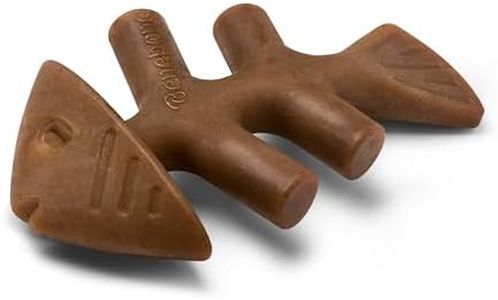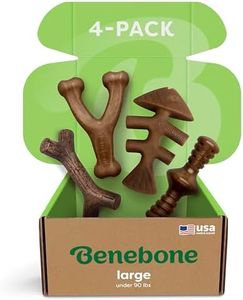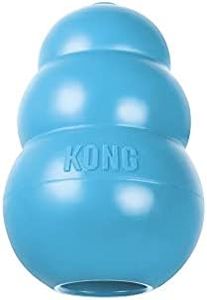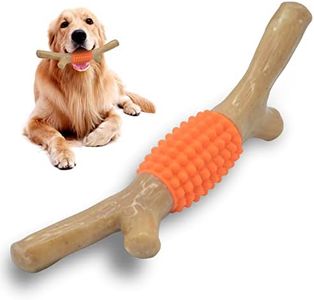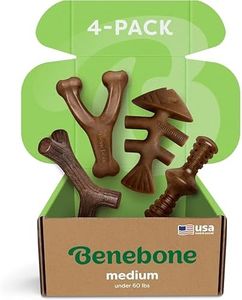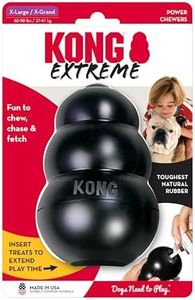We Use CookiesWe use cookies to enhance the security, performance,
functionality and for analytical and promotional activities. By continuing to browse this site you
are agreeing to our privacy policy
10 Best Dog Toys For Chewers
From leading brands and best sellers available on the web.Buying Guide for the Best Dog Toys For Chewers
When looking for dog toys for chewers, it’s essential to choose products that are both durable and safe. Chewing is a natural behavior for dogs, and selecting suitable toys can help redirect their chewing from household items, keep them entertained, and promote dental health. The right toy depends not only on the toughness but also on your dog’s size, breed, and chewing habits.MaterialThe material of a dog toy determines its durability and safety. Tough rubber and nylon are popular materials for toys aimed at aggressive chewers, as they can withstand a lot of pressure and teeth without breaking apart easily. Fabric and plush toys are less durable and usually not recommended for strong chewers. When navigating materials, look for those advertised as 'indestructible' or 'chew-resistant.' Choose a material based on your dog’s chew style: tough rubber or nylon for heavy chewers, softer rubber for moderate chewers, and avoid fabric for any strong chewer.
Toy SizeThe size of the toy should match your dog’s size and jaw. Toys that are too small can pose a choking hazard, while very large toys may not be comfortable for your dog to pick up and chew. Manufacturers usually provide weight or breed recommendations. As a general rule, pick toys that your dog can chew and carry but not fit entirely in their mouth. Selecting the right size ensures your dog's safety and encourages them to play and chew appropriately.
HardnessHardness refers to how firm or flexible the toy is. Extra-hard toys can last longer for aggressive chewers, but if they are too hard, they might risk damaging your dog's teeth. Slightly flexible, yet durable toys offer a balance between longevity and dental safety. To judge hardness, press the toy with your thumb; if it doesn't give at all, it might be too hard. For strong chewers, look for toys that are firm but still have a little give, ensuring they can grip and chew without hurting their teeth.
Shape and TextureShape and texture play a role in how interesting the toy is for your dog and can help clean teeth. Toys come in various shapes—bones, rings, balls, sticks—and textures, like grooves or bumps. Unique textures can help scrape off plaque and massage gums, promoting dental health. Choose shapes that your dog enjoys and textures that match their chewing style, offering both engagement and oral benefits.
Scent and FlavorSome dog toys are infused with scents or flavors—like bacon or peanut butter—to make them more appealing. Scented or flavored toys can encourage chewing, especially for dogs who lose interest quickly. However, ensure the flavors used are safe for dogs. Pick scented or flavored options if your dog is a picky chewer or needs extra encouragement; otherwise, plain toys are perfectly suitable for most chewers.
SafetySafety involves checking for non-toxic materials, secure construction, and lack of small detachable pieces. Since chewers are likely to break down toys over time, it’s important to regularly inspect toys for signs of wear and dispose of those that could break apart and become choking hazards. Always choose toys specifically labelled as safe and non-toxic, and consider how easily your dog might destroy a toy given their chewing habits.
